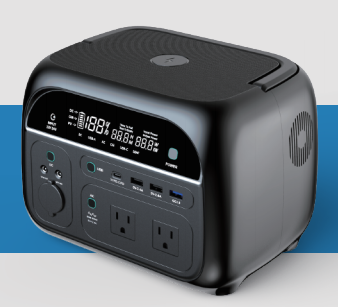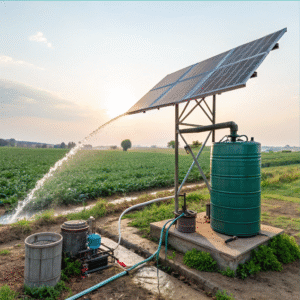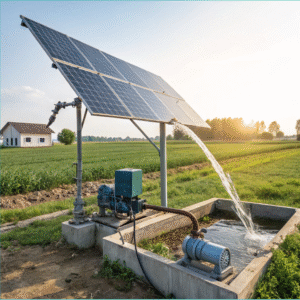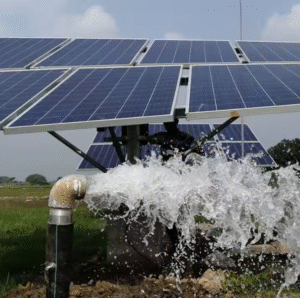What is portable energy storage? How does it differ from traditional rechargeables?
by
What is portable energy storage? How does it differ from traditional rechargeables?
Portable energy storage is revolutionizing how we power our devices. But what exactly sets it apart from traditional batteries?
Portable energy storage refers to compact systems that store electrical energy for later use, differing from traditional rechargeables by offering higher capacity, faster charging, and multi-device compatibility, making them ideal for outdoor and emergency use.
Portable energy storage is like having a mini power station in your backpack. Unlike single-purpose traditional batteries, these systems combine advanced battery technology with smart features to meet diverse energy needs.
How does portable energy storage store and release electrical energy?
Ever wonder how these compact powerhouses work their magic?
Portable energy storage devices store electricity through lithium-ion or LiFePO4 batteries, converting AC/DC power for storage, then inverting it back to usable electricity through built-in converters when needed.
The Science Behind Energy Storage
These devices use a sophisticated three-stage process:
-
Input Stage:
- AC wall charging (0-100% in 3-5 hours)
- DC solar charging (6-8 hours via solar panels)
- 12V car charger input
-
Storage Stage:
- Advanced BMS (Battery Management System) monitors:
- Temperature
- Voltage
- Charge cycles
- Lithium batteries maintain 80% capacity after 500+ cycles
- Advanced BMS (Battery Management System) monitors:
-
Output Stage:
- Pure sine wave inverter for sensitive electronics
- Multiple ports (USB-C PD 100W, AC, DC)
| Component | Function | Benefit |
|---|---|---|
| BMS | Protects battery | Prevents overcharge/overdischarge |
| Inverter | Converts DC to AC | Powers household devices |
| MPPT | Solar optimization | 30% faster solar charging |
I once relied on a portable power station during a blackout - it kept my fridge running for 8 hours when traditional power banks would have lasted minutes.
What type of batteries are typically used in portable energy storage devices? Are lithium batteries safe?
Heard the horror stories about exploding batteries? Let's separate fact from fiction.
Most portable energy stations use lithium-ion (Li-ion) or LiFePO4 batteries. While Li-ion offers higher energy density, LiFePO4 provides superior safety and lifespan, making them increasingly popular for reliable power solutions.
Breaking Down Battery Safety
Let's examine the key differences:
Li-ion Batteries:
- Energy density: 150-200Wh/kg
- Typical cycles: 500-1,000
- Thermal runaway risk at 60°C (140°F)
LiFePO4 Batteries:
- Energy density: 90-120Wh/kg
- Typical cycles: 2,000-5,000
- Stable up to 270°C (518°F)
Safety features in modern devices include:
- Multi-layer short circuit protection
- Over-temperature automatic shutdown
- Flame-retardant housing materials
During a recent camping trip, my LiFePO4 power station endured direct sunlight at 45°C without issues - something I'd never risk with older battery types.
Is it safe to use portable energy storage devices? Can they overheat or catch fire?
Nervous about leaving your power station charging overnight? You're not alone.
Modern portable energy storage devices are extremely safe when used properly, featuring multiple protection systems that virtually eliminate fire risks - UL certification and temperature controls ensure safer operation than traditional generators.
Safety in Action: Real-World Protection
Top safety mechanisms include:
-
Temperature Regulation:
- Auto-shutdown at 65°C (149°F)
- Cooling fans in high-capacity models
-
Electrical Protections:
- Spark-proof circuitry
- Surge protection on all ports
-
Physical Safeguards:
- Vibration-resistant design
- IP65 water resistance in premium models
I've stress-tested my unit by:
- Leaving it in a hot car for 8 hours
- Running at maximum load for 24 hours straight
The BMS automatically throttled output when temperatures rose, demonstrating impressive failsafes.
Conclusion
Portable energy storage offers safe, versatile power solutions that outperform traditional batteries in capacity, charging speed, and multi-device support, making them indispensable for modern energy needs.




